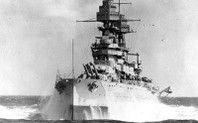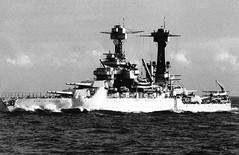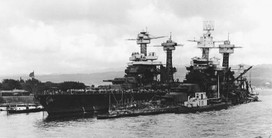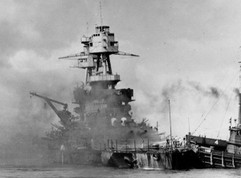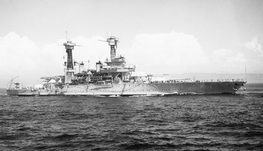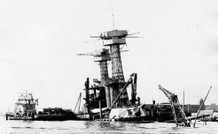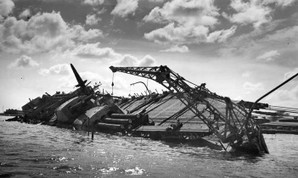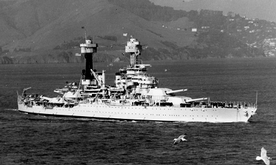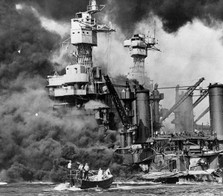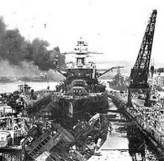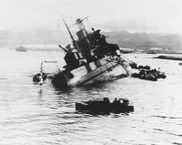Pearl Harbor Ships - American Legion 2
Main menu:
Pearl Harbor Ships
Special Interests
Pearl Harbor in Honolulu, Hawaii.Marks the resting place of 1,102 of the 1,177 sailors and Marines killed on USS Arizona during the attack on Pearl Harbor. Photos are before the attack and after.USS Arizona (BB-39) Pennsylvania-Class BattleshipBuilt for and by the United States Navy in the mid-1910s. Named in honor of the 48th state's recent admission into the union, the ship was the second and last of the Pennsylvania class of "super-dreadnought" battleships. Although commissioned in 1916, the ship remained stateside during World War I. Shortly after the end of the war, Arizona was one of a number ofAmerican ships that briefly escorted President Woodrow Wilson to the Paris Peace Conference. The ship was sent to Turkey in 1919 at the beginning of the Greco-Turkish War to represent American interests for several months. Several years later, she was transferred to the Pacific Fleet and remained there for the rest of her career.Hit by four armor-piercing bombs, exploded; 1,177 dead. Total loss.USS Tennessee (BB-43) Tennessee-Class BattleshipThe lead ship of her class of battleship, was the third ship of the United States Navy named in honor of the 16th US state. During World War II in the Pacific Theater, she was damaged during the attack on Pearl Harbor in December 1941 but was repaired and modernized.She participated in shore bombardments at the Aleutian Islands, Tarawa, the Marshall Islands, the Marianas, the Philippines, Iwo Jima, Okinawa among others. She was also involved in the Battle of Surigao Strait, the final battleship vs. battleship conflict in world naval history.Hit by two bombs; 5 dead. Returned to service February 1942USS Nevada (BB-36) Nevada-Class BattleshipThe second United States Navy ship to be named after the 36th state, was the lead ship of the two Nevada-class battleships. Launched in 1914, Nevada was a leap forward in dreadnoughttechnology; four of her new features would be included on almost every subsequent US battleship: triple gun turrets, oil in place of coal for fuel, geared steam turbines for greater range, and the "all or nothing" armor principle. These features made Nevada, alongside its sister ship Oklahoma, the first US Navy "standard-type" battleships.Hit by six bombs, one torpedo, beached; 60 dead. Returned to service October 1942USS California (BB-44) Tennessee-Class BattleshipOne of two Tennessee-class battleships completed shortly after World War I, was the fifth ship of the United States Navy named in honor of the 31st state. She was the last American battleship builton the West Coast, and the only one of the dreadnought type. She served in the Pacific her entire career, and for twenty years wasthe flagship of the Pacific Fleet. She was sunk in the attack on Pearl Harbor at her moorings in Battleship Row, but was salvaged and reconstructed. She served again for the remainder of World War II before being decommissioned in 1947 and scrapped in July 1959.Hit by two bombs, two torpedoes, sunk; 100 dead. Returned to service January 1944.USS Oklahoma (BB-37) Nevada-Class BattleshipBuilt by the New York Shipbuilding Corporation for the United States Navy in 1910, notable for being the first American class of oil-burning dreadnoughts.Commissioned in 1916, Oklahoma served in World War I as a part of Battleship Division 6, protecting Allied convoys on their way across the Atlantic. After the war, she served in both the United States Battle Fleet and Scouting Fleet. Oklahoma was modernized between 1927 and 1929. In 1936, she rescued American citizens and refugees from the Spanish Civil War. On returning to the West Coast in August of the same year, Oklahoma spent the rest of her service in the Pacific.On 7 December 1941, Oklahoma was sunk by several torpedoes during the Japanese attack on Pearl Harbor. Torpedoes from torpedo bomber airplanes hit the Oklahoma's hull and the ship capsized. Survivors jumped off the ship 50 feet (15 m) into burning hot water or crawled across mooring lines that connected Oklahoma and Maryland. Some sailors inside escaped when rescuers drilled holes and openedhatches to rescue them. A total of 429 crew died when she capsized and sank in Battleship Row. In 1943, Oklahoma was righted and salvaged. Unlike most of the other battleships that were recovered following Pearl Harbor, Oklahoma was too damaged to return to duty. Her wreck was eventually stripped of her remaining armament and superstructure before being sold for scrap in 1946. The hulk sank in a storm in 1947, while being towed from Oahu, Hawaii, to a breakers yard in San Francisco Bay.Hit by five torpedoes, capsized; 429 dead. Total loss.USS Maryland (BB-46) Colorado-Class BattleshipAlso known as "Old Mary" or "Fighting Mary" to her crewmates. She was the third ship of the United States Navy to be named in honor of the seventh state. She was commissioned in 1921, and serving as the flagship of the fleet, cruised to Australia, New Zealand, and Brazil.She is most notable for her service in World War II. She was present on Battleship Row during the Attack on Pearl Harbor, and was lightly damaged by Japanese bombs. Returning to duty in 1942, she saw service in the Pacific War, first supporting the rest of the fleet at the Battle of Midway, and then patrolling the Fiji Islands to guard against Japanese incursion. Next, she went on the offensive, commencing shore bombardments in the Battle of Tarawa and later in the Battle ofKwajalein. During the Battle of Saipan she took torpedo damage to her bow, necessitating repairs and refits. She then participated in the Battle of Leyte Gulf where she was hit by a kamikaze. She took another kamikaze hit at the Battle of Okinawa, and was under repair at the end of World War II.After service in Operation Magic Carpet, she was decommissioned in 1947, and sold for scrap in 1959. She received seven battle stars for World War II service.Hit by two bombs; 4 dead (including floatplane pilot shot down). Returned to service February 1942.USS West Virginia (BB-48) Colorado-Class BattleshipThe second United States Navy ship named in honor of the country's 35th state. She was laid down on 12 April 1920, at Newport News, Virginia, launched on 19 November 1921, and commissioned on 1 December 1923. She was sponsored by Alice Wright Mann, daughter of noted West Virginian T. Mann,[1][2] and her first captain was Thomas J. Senn. After her shakedown and crew training were finished, she was overhauled at Hampton Roads, and later ran aground in Lynnhaven Channel.Following repairs, she participated in exercises and engineering and gunnery courses, winning four medals in the latter. She participated in other fleet tactical development operations until 1939. In 1940, she was transferred to Pearl Harbor, to guard against potential Japanese attack, and was sunk by six torpedoes and two bombs during the attack on Pearl Harbor. On 17 May 1942, she was salvaged from the seabed by draining the water from her hull.After repairs in Pearl Harbor, she sailed to the Puget Sound Navy Yard. There she received an extensive refit, including the replacement of her 5-inch (127 mm)/25 caliber anti-aircraft guns and single-purpose 5-inch/51 caliber guns with dual-purpose 5-inch/38 caliber anti-aircraft guns. She left Puget Sound in July 1944, for Leyte Gulf.She bombarded Leyte in November 1944, becoming part of a successful American plan to destroy the portion of the Japanese fleet trying to sail through the Surigao Strait, and later attacked Iwo Jima and Okinawa. At the end of the Pacific War she entered Tokyo Bay, for the Japanese surrender, and became part of Operation Magic Carpet, making three runs to Hawaii to transport veterans home. She was deactivated on 9 January 1947, and laid up at Bremerton, Washington, until sold for scrap on 24 August 1959.Hit by two bombs, seven torpedoes, sunk; 106 dead. Returned to service July 1944.USS Pennsylvania (BB-38) Pennsylvania-Class BattleshipThe lead ship of the Pennsylvania class of United States Navy super-dreadnought battleships. The third Navy ship named for thestate of Pennsylvania. She was laid down on 27 October 1913, by the Newport News Shipbuilding and Dry Dock Company, Newport News, Virginia. She was launched on 16 March 1915, sponsored by Elizabeth Kolb of Philadelphia, and commissioned on 12 June 1916, with Captain Henry B. Wilson in command.In drydock with Cassin and Downes, hit by one bomb and debris from USS Cassin; 9 dead. Remained in service.Battleship USS Utah (AG-16) Florida-Class Battleship. Ex-battleship (target/AA training ship)The second and final member of the Florida class ofdreadnought battleships. The first ship of the United States Navynamed after the state of Utah, she had one sister ship, Florida. Utah was built by the New York Shipbuilding Corporation, laid down in March 1909 and launched in December of that year. She was completed in August 1911 and boasted a main battery of ten 12-inch guns in five twin gun turrets.64 dead. Total loss.CRUISERS· Helena: hit by one torpedo; returned to service January 1942. 20 dead.· Raleigh: hit by one torpedo; returned to service February 1942.· Honolulu: Near miss, light damage; remained in service.DESTROYERS· Cassin: in drydock with Downes and Pennsylvania, hit by one bomb, burned; returned to service February 1944.· Downes: in drydock with Cassin and Pennsylvania, caught fire from Cassin, burned; returned to service November 1943.· Helm: underway to West Loch, damaged by two near-miss bombs;[116] continued patrol; dry-docked 15 January 1942 and sailed 20 January 1942.· Shaw: hit by three bombs; returned to service June 1942.AUXILIARIES· Oglala (minelayer): Damaged by torpedo hit on Helena, capsized; returned to service (as engine-repair ship) February 1944.· Vestal (repair ship): hit by two bombs, blast and fire from Arizona, beached; returned to service by August 1942.· Curtiss (seaplane tender): hit by one bomb, one crashed Japanese aircraft; returned to service January 1942. 19 dead.· Sotoyomo (harbor tug): damaged by explosion and fires in Shaw; sunk; returned to service August 1942.· YFD-2 (yard floating dock): damaged by 250 kg bombs; sunk; returned to service 25 January 1942 servicing Shaw.
| UNITED STATES | JAPAN |
Commanders and leaders | |
| ADM Husband E. Kimmel LTG Walter Short | VADM Chūichi Nagumo ADM Isoroku Yamamoto CDR Mitsuo Fuchida |
Strength | |
| 8 battleships 8 cruisers 30 destroyers 4 submarines 3 USCG cutters 47 other ships ≈390 aircraft | Mobile Unit: 6 aircraft carriers 2 battleships 2 heavy cruisers 1 light cruiser 9 destroyers 8 tankers 23 fleet submarines 5 midget submarines 414 aircraft |
Casualties and losses | |
| 4 battleships sunk 4 battleships damaged 1 ex-battleship sunk 1 harbor tug sunk 3 cruisers damaged 3 destroyers damaged 3 other ships damaged 188 aircraft destroyed 159 aircraft damaged 2,335 killed 1,143 wounded | 4 midget submarines sunk 1 midget submarine grounded 29 aircraft destroyed 74 aircraft damaged 64 killed 1 sailor captured |
Civilian casualties | |
68 killed 35 wounded3 aircraft shot down | |
Have questions or comments? We welcome your opinion. Please email your comments or suggestions to webmaster@lanesboroamericanlegion.org or call Anne at 507-460-9040. Thank you for your support.
